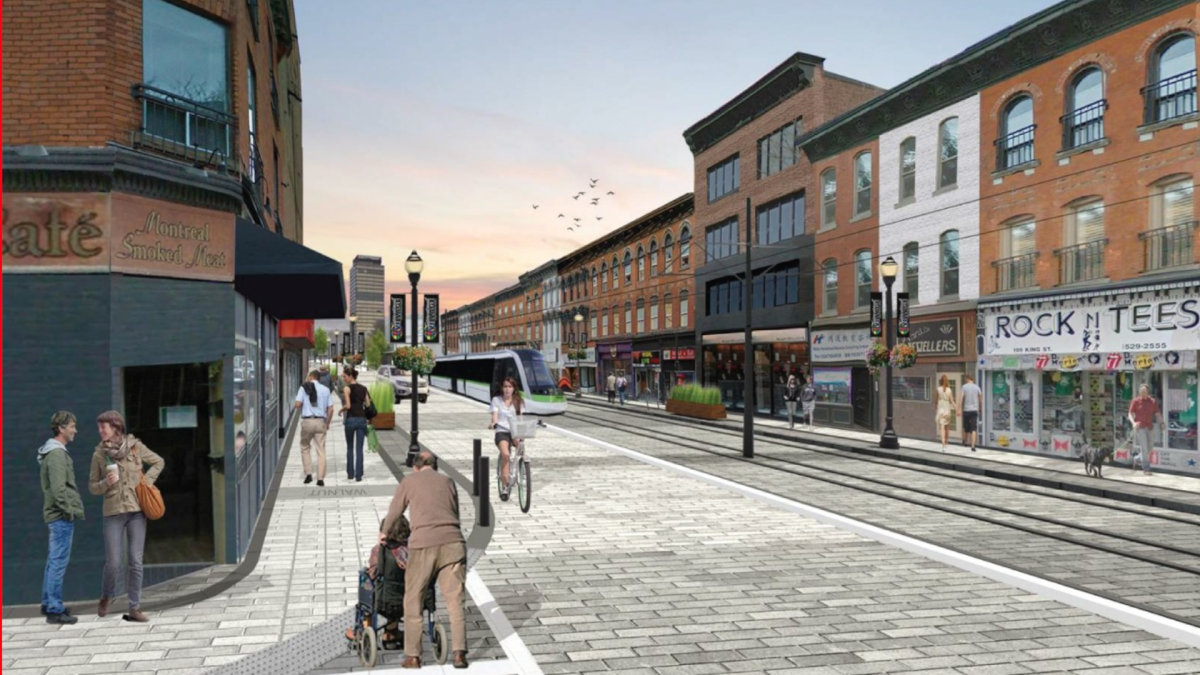The crown agency tagged with building Hamilton’s light rail transit (LRT) says it’s “closely monitoring” current trends in the supply chain that might impact costs for the $3.4-billion project.

A spokesperson for Metrolinx told Global News that the project is still on course with property acquisitions and demolitions continuing in 2022 with the possibility of utility re-locations starting late in the year.
“The route alignment, including length, is confirmed,” Matt Llewellyn told Global News in a statement.
“Metrolinx has a team of experts who closely monitor any trends related to increased costs or changes, and help find solutions to ensure projects are delivered on time and on budget.”
During a recent interview with 900 CHML’s Good Morning Hamilton Flamborough-Glanbrook MPP responded to a Hamilton Spectator post which explored the possibility of higher construction costs citing current concerns over Calgary’s $5.5-billion Green Line LRT project.
Donna Skelly told guest host Scott Radley the province’s commitment to the LRT hasn’t changed and that discussions are “certainly not happening right now” over any potential issues tied to costs.
However, the MPP did admit business in the province is in an “unprecedented time” and that the cost of purchasing goods and construction materials are “soaring.”
“I’ve never seen inflation like this,” Skelly said.
“We’re also seeing delays and that also adds to cost overruns, and we have again, a challenge getting construction materials.”
Hamilton’s LRT officially got back on the rails in May 2021 after the Doug Ford government cancelled the project in 2019 citing cost overruns, including construction and ongoing operation of the line.
An agreement reached between the province and federal governments to jointly fund the 14-kilometre light rail for $3.4 billion resurrected the project.
- Alberta to overhaul municipal rules to include sweeping new powers, municipal political parties
- Grocery code: How Ottawa has tried to get Loblaw, Walmart on board
- Military judges don’t have divided loyalties, Canada’s top court rules
- Norad looking to NATO to help detect threats over the Arctic, chief says
The city of Hamilton will keep fare revenue once the LRT is operational, but will be responsible for daily operating and maintenance costs.
The province is on the record saying it will cover cost overruns during construction, but Skelly submitted that they’re likely not unlimited.
“My concern is at what point do we say is this, you know, is this going to become a $4 billion project? Is it going to become a $5 billion project?” the MPP said.
“And if so, should the city eventually be asked to to contribute some funds towards this project? Or do we look at a and a scaled down version of the track?”
In late January, the chair of Calgary’s CTrain addition admitted delays with procurement for the utility relocation project in the Beltline and downtown core to make way for a tunnel.
The largest and most expensive infrastructure project in Calgary’s history has the project’s execs concerned over higher costs in materials and labour, and the prospect of competing projects in Ontario, Quebec and B.C. ready to accept bids on contracts.
In light of the risks, project managers have split the first stage of the LRT construction into smaller phases over concerns of even being able to build a planned second phase.
A similar “break up” strategy is something Metrolinx says it’s considering for the Hamilton bidding process.
At present the agency is seeking out an estimated 30 properties it will likely need to acquire to reach the 90 full properties it needs to complete the project.
Several hundred partial acquisitions are also expected to be made in the next year.









Comments